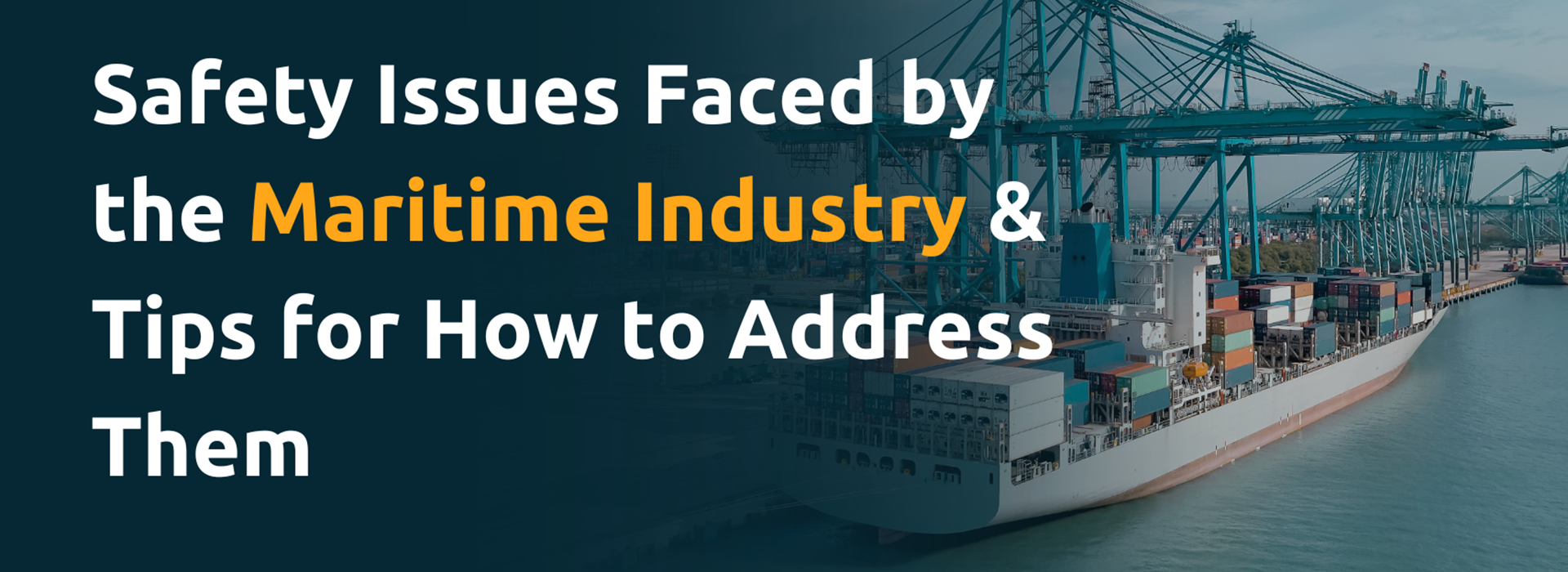Ok
The maritime industry stands as a vital pillar of global trade and commerce. However, it grapples with its share of safety challenges, which if not addressed promptly and effectively, can have dire consequences. From inadequate responses to equipment failures, communication breakdowns to ineffective evacuations, the maritime sector must navigate a complex web of potential hazards.
In this article, we delve into the safety issues faced by the maritime industry and provide tips on how to tackle them. By implementing these proactive measures, vessel operators can ensure the safety of their crew, protect their valuable assets, and maintain smooth operations on the high seas.
Inadequate Response
Consequences:
An inadequate response to a fuel leak and subsequent fire can lead to severe consequences. Delayed recognition of the emergency and failure to activate firefighting systems and emergency response procedures immediately can result in uncontrolled fire spread, posing risks to the crew and the vessel. Furthermore, a delayed response reduces the time available for crew members to safely evacuate the engine room, potentially leading to crew members being trapped or unable to reach designated assembly areas. Inadequate response measures compromise crew safety, worsen engine room damage, and may even result in the loss of the vessel.
Safety Tips:
-
Train crew members to promptly recognize and report emergency situations.
-
Conduct regular drills to ensure crew members are familiar with emergency response procedures and can react swiftly.
-
Maintain up-to-date emergency response plans that outline clear steps and responsibilities.
-
Encourage a proactive reporting culture to ensure immediate action during emergencies.
Equipment Failure
Consequences:
The malfunctioning or inadequate performance of firefighting equipment and systems can significantly hinder fire control efforts and exacerbate the emergency situation. Fire extinguishers that are expired or malfunctioning may not discharge properly or lack sufficient firefighting agents, limiting their effectiveness in suppressing the fire. Furthermore, failures in fire detection systems can delay the early detection of the fire, allowing it to grow larger before being noticed. Faulty fixed firefighting systems, such as sprinklers or foam systems, may fail to operate as intended, reducing their ability to contain the fire. These equipment failures can impede the crew's ability to effectively control the fire, potentially leading to its continued spread, increased risks to crew members, and extended duration of the fire.
Safety Tips:
-
Regularly inspect and maintain firefighting equipment to ensure proper functioning.
-
Conduct routine checks on fire extinguishers, fixed firefighting systems, and fire detection systems.
-
Ensure an adequate supply of fully functional and properly serviced firefighting equipment.
-
Provide crew members with comprehensive training on operating and utilizing firefighting equipment effectively.
Communication Breakdown
Consequences:
Communication breakdown during emergencies can lead to delays, misunderstandings, and errors in response. This can hinder the implementation of emergency procedures, compromise firefighting and evacuation efforts, and jeopardize crew safety. Clear communication protocols, reliable systems, and a culture of effective information exchange are essential to mitigate these risks and ensure a coordinated and efficient emergency response.
Safety Tips:
- Maintain reliable communication systems and perform regular checks to ensure functionality.
- Establish clear communication protocols and procedures for emergency situations.
- Provide language proficiency training for crew members to overcome language barriers.
- Foster a culture of effective communication, emphasizing the importance of clear and concise information exchange.
Ineffective Evacuation
Consequences:
Inefficient evacuation procedures can jeopardize crew safety with various consequences. Unclear or poorly practiced evacuation protocols can cause confusion and panic among crew members, leading to disorganization and difficulty in following evacuation routes. Blocked escape routes due to fire, debris, or equipment can impede safe evacuation, potentially trapping crew members. Delays in evacuation due to ineffective procedures or unaccounted crew members further escalate risks. Regular drills, clear signage, unobstructed escape routes, and efficient evacuation protocols are essential for a safe and timely evacuation.
Safety Tips:
- Regularly practice evacuation drills to familiarize crew members with evacuation routes and procedures.
- Ensure clear signage indicating escape routes and assembly areas.
- Keep escape routes unobstructed by regularly removing potential hazards.
- Assign accountability for crew members during evacuation to ensure no one is left behind.
How RelyOn Nutec Can Help
In all these safety-critical scenarios, leadership emerges as a pivotal factor in enhancing safety within the maritime industry. Hereby, effective leaders can help create a safety-first culture onboard, instilling a sense of responsibility for crew members and vessels alike. Through leading by example, fostering effective communication, and investing in continuous training, leaders contribute significantly to maritime safety. At RelyOn Nutec, we offer efficient leadership training targeting precisely these focus points. With our partner, CAVU International, we work worldwide across various safety critical industries to deliver the coaching and mentoring necessary to improve team behaviors and organizational culture both onsite and virtually.
In addition, our extensive library of e-learning and in-person safety courses ensures that not only team leaders, but that each individual crew member is well-prepared and trained to respond effectively in emergency situations. For more information about the STCW courses we offer, check out our training course page here.
Next read
-

-

-
 Article 14. June 2024
Article 14. June 2024 -

Ensuring Safety and Efficiency: IRATA Rope Access Training for a Safer Work Environment
In industries such as oil & gas and renewables, where accessing challenging locations is common, rope access methods provide a safe and efficient solution. These methods offer technicians a secure means of navigating heights and restricted areas while minimizing environmental impact. However, proficiency in rope access requires proper training and a globally accepted safety education.
Article 4. June 2024 -

Polaris Sells RelyOn Nutec to Mubadala Capital
The acquisition, part of Mubadala Capital’s flagship Private Equity Fund IV, strengthens the asset manager’s footprint in the business services sector.
Article 24. May 2024 -

RelyOn Nutec Acquires Electrical Training and Consultancy Specialist Quercus Technical Services, Fast-tracking European Electrical Capability Build
Effective May 21st, RelyOn Nutec has acquired Quercus Technical Services BV, one of the largest specialist electrical safety and skills training organizations in the Netherlands. The acquisition of Quercus bolsters RelyOn Nutec’s position in the electrical training market and accelerates its European roll out.
Article 22. May 2024 -

-
 Article 2. May 2024
Article 2. May 2024
